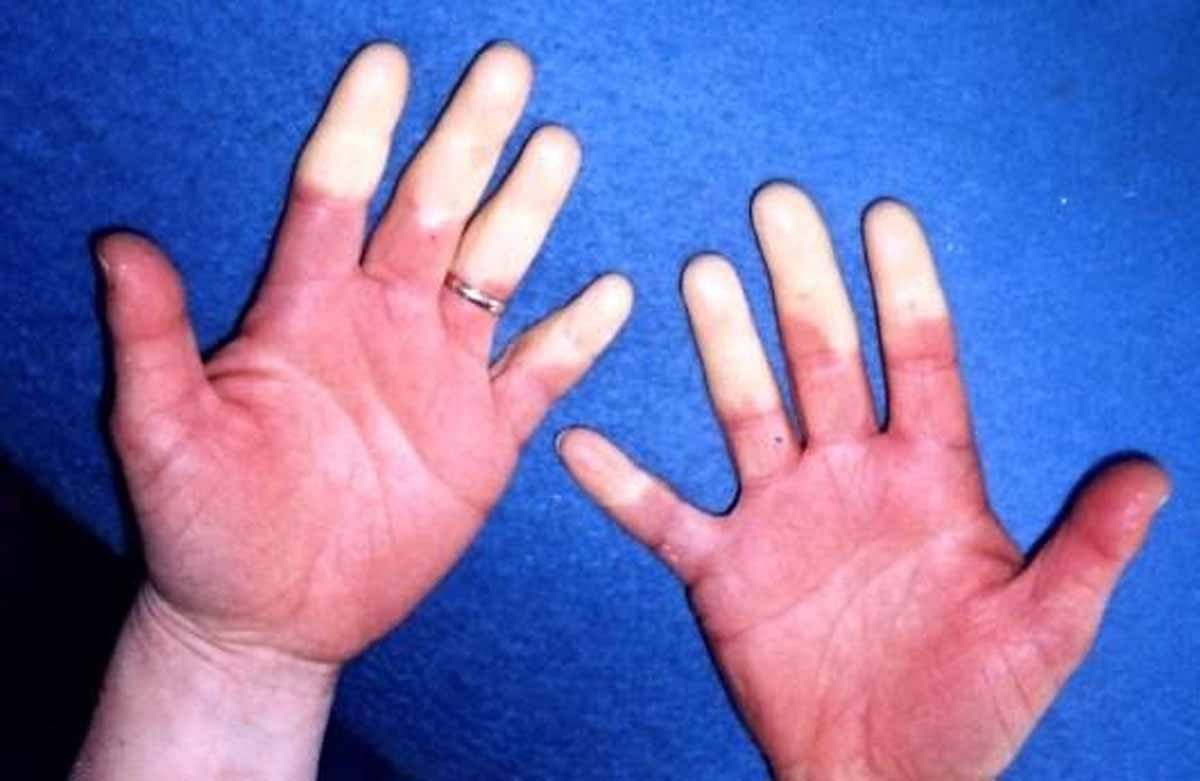- Home
- Editorial
- News
- Practice Guidelines
- Anesthesiology Guidelines
- Cancer Guidelines
- Cardiac Sciences Guidelines
- Critical Care Guidelines
- Dentistry Guidelines
- Dermatology Guidelines
- Diabetes and Endo Guidelines
- Diagnostics Guidelines
- ENT Guidelines
- Featured Practice Guidelines
- Gastroenterology Guidelines
- Geriatrics Guidelines
- Medicine Guidelines
- Nephrology Guidelines
- Neurosciences Guidelines
- Obs and Gynae Guidelines
- Ophthalmology Guidelines
- Orthopaedics Guidelines
- Paediatrics Guidelines
- Psychiatry Guidelines
- Pulmonology Guidelines
- Radiology Guidelines
- Surgery Guidelines
- Urology Guidelines
Botox successfully treats Raynaud’s phenomenon: Case Report

A recent case report published in the Journal of Drugs in Dermatology describes the case of a patient with Raynaud’s phenomenon refractory to standard therapies, whose symptoms completely resolved after treatment with Botulinum toxin (BTX-A). Also, she showed no relapse or recurrence of symptoms after follow up of 1 and 5 years.
Raynaud’s phenomenon is an exaggerated physiological response of blood vessels in the distal extremities to emotional stress and cold. It is characterized by pale to blue to red sequence of color changes of the digits, most commonly after exposure to cold. It occurs due to spasm of blood vessels. may be primary (idiopathic) or secondary, usually in conjunction with a collagen vascular disorder. Treatment consists primarily of lifestyle modifications; if unsuccessful, pharmacotherapy with dihydropyridine calcium channel blockers can be added.
Widely known for its cosmetic use, botulinum toxin (BTX-A) is a neurotoxic protein produced by Clostridium botulinum spores. BTX-A also has many therapeutic utilities due to its ability to inhibit multiple neurotransmitters.
A 19-year-old-female was presented with a 2-month history of severe pain and ulceration of her fingers. She described the onset of her pain as erratic and triggered by exposure to the cold. Upon exposure, the skin on her fingers would change from pink to purple, white, or blue. Her left index finger was severely affected and remained purple in the absence of cold temperatures. Wearing gloves failed to alleviate her symptoms.
On physical examination, her fingertips were cold to touch and dusky with a blue-black discolouration bilaterally. Her left index fingertip was ulcerated and necrotic; her palms and proximal fingers were pink and warm. A diagnosis of Raynaud’s phenomenon with chronic debilitating digital ulcers was made. Multiple remedies were attempted including prednisone, hydroxychloroquine, tadalafil, aspirin, stellate ganglion nerve block, and nitroglycerin cream; however, they all failed to control the ischemia.
On subsequent visits, the doctors recommended botulinum toxin as an alternative therapy. A vial of BTX-A (100MU) was diluted in preservative-free normal saline for a final concentration of 2U/0.1mL.
Just 3 days after a single treatment, the patient had a notable improvement in symptoms and mobility. She received no further treatments yet remained relapse-free at 1- and 5-year follow-up, suggesting that botulinum toxin A may be an effective treatment for the long-term resolution of Raynaud’s phenomenon.
To read the case report in detail log on to Journal of Drugs in Dermatology

Disclaimer: This site is primarily intended for healthcare professionals. Any content/information on this website does not replace the advice of medical and/or health professionals and should not be construed as medical/diagnostic advice/endorsement or prescription. Use of this site is subject to our terms of use, privacy policy, advertisement policy. © 2020 Minerva Medical Treatment Pvt Ltd